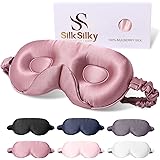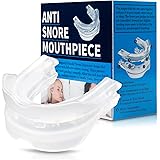Have you ever spent a night camping or backpacking, only to wake up shivering despite being tucked inside a seemingly adequate sleeping bag or quilt? If so, the experience highlighted in the video above likely resonates deeply. While often perceived primarily for cushioning from the uneven ground, a warm sleeping pad is, in fact, an absolutely critical component of any effective sleep system, particularly when facing colder conditions or venturing into fringe seasons.
The misconception that a sleeping pad’s sole purpose is comfort often leads to suboptimal gear choices. However, the ground acts as a significant thermal conductor, drawing warmth away from the body at an alarming rate. Even the most robust sleeping bag will struggle to maintain its insulating properties when its underside is compressed by body weight and resting directly on a cold surface. A properly insulated sleeping pad functions as a crucial thermal barrier, preventing this conductive heat loss and ensuring the entire sleep system performs as intended.
The Science of Warmth: Understanding Heat Transfer in the Backcountry
To fully appreciate the necessity of an insulated sleeping pad, a brief understanding of heat transfer mechanisms is often beneficial. In the backcountry, an individual’s body heat is continually being lost to the environment through four primary methods: conduction, convection, radiation, and evaporation. When sleeping on the ground, conduction becomes a particularly potent enemy of warmth.
Heat is transferred directly from a warmer object to a colder object through physical contact. For a sleeping camper, the body is the warmer object, and the ground, especially cold earth, snow, or ice, is the colder object. Without a barrier, body heat is rapidly wicked away through the thin fabric of a sleeping bag and into the ground. A highly insulated sleeping pad is engineered to impede this conductive heat flow, thereby keeping the body’s warmth where it belongs – surrounding the sleeper.
R-Value Explained: The Benchmark for Sleeping Pad Insulation
When selecting a warm sleeping pad, the R-value is the paramount specification to be scrutinized. This metric quantifies a material’s resistance to heat flow, or its thermal resistance. A higher R-value indicates superior insulating properties, meaning less heat will be transferred through the pad.
Historically, R-value ratings could be somewhat inconsistent across different manufacturers, leading to confusion among consumers. However, an industry-standardized test, ASTM F3340, was introduced to ensure consistent and comparable R-value ratings. This method involves placing the sleeping pad between two plates of different temperatures and measuring the energy required to maintain the temperature difference, thereby providing a standardized measure of its thermal performance.
For backpacking and camping in colder nights, especially during shoulder seasons (spring and fall) or at higher elevations, an ASTM-rated R-value of 4 or higher is frequently recommended. This threshold is generally considered the minimum for ensuring adequate warmth and comfort when ambient temperatures drop below freezing. Pads with R-values ranging from 5 to 7+ are typically preferred for true winter conditions or for individuals who sleep particularly cold.
Selecting the Optimal R-Value for Your Adventures
Determining the appropriate R-value for a sleeping pad is a crucial decision that greatly impacts overall comfort and safety in the outdoors. It is important to consider not only the lowest expected temperatures but also personal physiology and sleeping preferences. Individuals who are naturally cold sleepers, or those venturing into environments where conditions can fluctuate dramatically, should generally err on the side of a higher R-value.
It is often advisable to select a pad that offers slightly more insulation than what might be strictly necessary for average conditions. This provides a valuable buffer against unexpected cold snaps or situations where the internal temperature of a tent might drop more than anticipated. Furthermore, factors such as altitude, wind exposure, and ground conditions (e.g., sleeping on snow vs. dry ground) can all influence the effective warmth experienced from a sleeping pad, necessitating careful consideration of its thermal resistance.
Types of Insulated Sleeping Pads and Their Construction
The market for insulated sleeping pads has evolved considerably, offering various designs to achieve effective thermal resistance while balancing weight, packed size, and durability. Each construction method employs different strategies to trap air and prevent its circulation, which would otherwise facilitate heat transfer.
Closed-cell foam pads represent the simplest and often most durable form of insulation. These pads contain numerous tiny, sealed air pockets that resist compression and effectively trap air. While generally heavier and bulkier, their reliability and resistance to punctures make them a popular choice for budget-conscious or expedition-style trips where failure is not an option. However, their R-values are typically lower, often necessitating layering with another pad for colder conditions.
Inflatable sleeping pads, on the other hand, achieve insulation through internal baffling and often the incorporation of synthetic insulation or reflective barriers. Synthetic insulation, similar to what is found in sleeping bags, traps air within its fibers. Reflective barriers, composed of thin metallic films, work by reflecting radiant heat back towards the body, effectively preventing its loss. These pads offer superior warmth-to-weight ratios and pack down to a much smaller size, making them ideal for backpacking where space and weight are at a premium. The Nemo Tensor and Big Agnes Rapid SL, specifically mentioned in the video, are excellent examples of high-performance inflatable pads that utilize advanced insulation technologies to achieve impressive R-values in lightweight packages.
Advanced Features in Modern Warm Sleeping Pads
Beyond basic insulation, contemporary warm sleeping pads often incorporate several advanced features designed to enhance comfort, ease of use, and durability. These innovations contribute significantly to the overall user experience and performance in challenging environments. The specific models highlighted, such as the Nemo Tensor and Big Agnes Rapid SL, exemplify many of these sophisticated design elements, which justify their premium positioning in the market.
For instance, specialized baffle designs are employed to create more stable sleeping surfaces, reducing the “bouncy” feeling sometimes associated with inflatable pads. These baffles can also be strategically oriented to create areas of higher insulation where it is most needed, such as under the torso. Furthermore, quiet materials are increasingly being utilized to minimize the crinkling sound that can disturb sleep, a common complaint with older reflective-coated pads. These considerations, while seemingly minor, contribute substantially to a truly restful night in the backcountry, ensuring that the initial investment in a quality, warm sleeping pad pays dividends in comfort and performance.
The Cost-Benefit Analysis of Investing in an Insulated Pad
It is undeniable that high-quality, insulated sleeping pads, particularly those with higher R-values and advanced construction, often command a higher price point. As noted in the accompanying video, searching for cheap alternatives on major online retailers might yield options that appear similar but fundamentally lack the crucial insulating properties required for genuine warmth. This discrepancy in cost directly reflects the engineering, materials science, and testing that go into creating a truly effective thermal barrier.
Considering the potential consequences of inadequate insulation – ranging from discomfort and poor sleep quality to genuine hypothermia in extreme conditions – the investment in a superior warm sleeping pad is readily justified. It is widely understood that a warm, restful night’s sleep significantly contributes to safety, morale, and performance on the trail. Therefore, when assembling a sleep system, allocating a significant portion of the budget to a properly insulated sleeping pad should be considered an essential component, rather than an optional luxury, especially when anticipating colder conditions or operating within a sensitive thermal margin.








